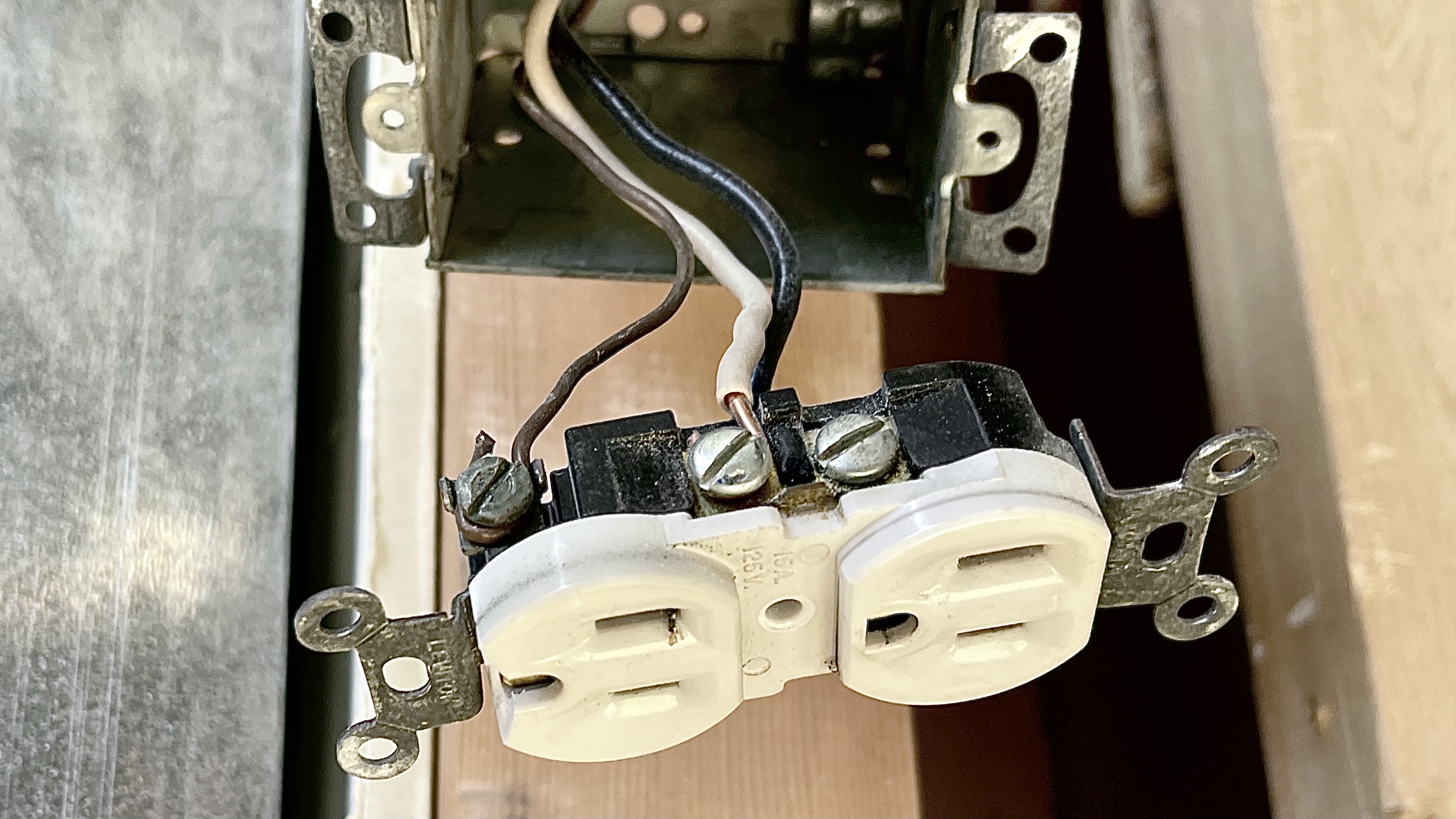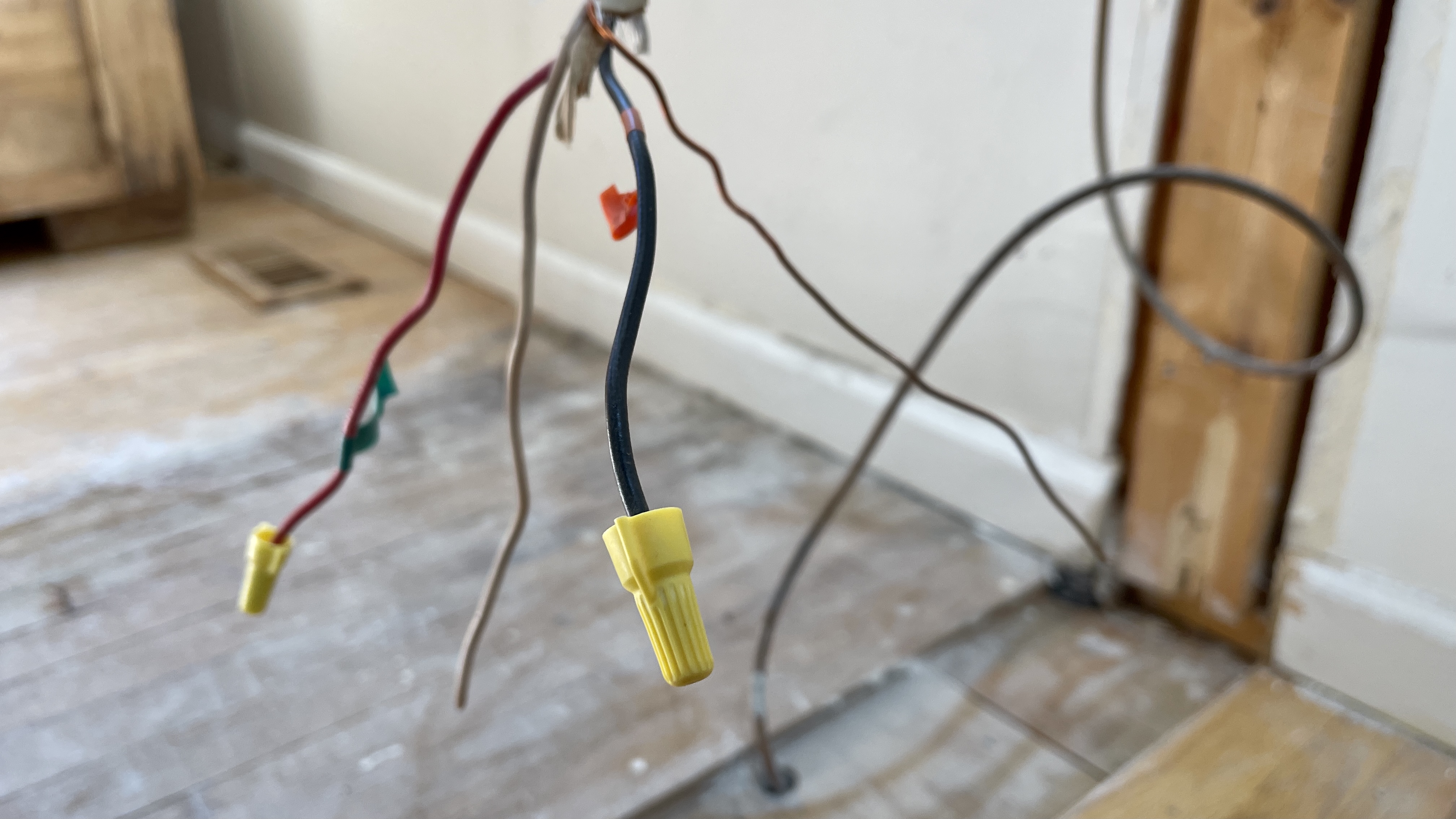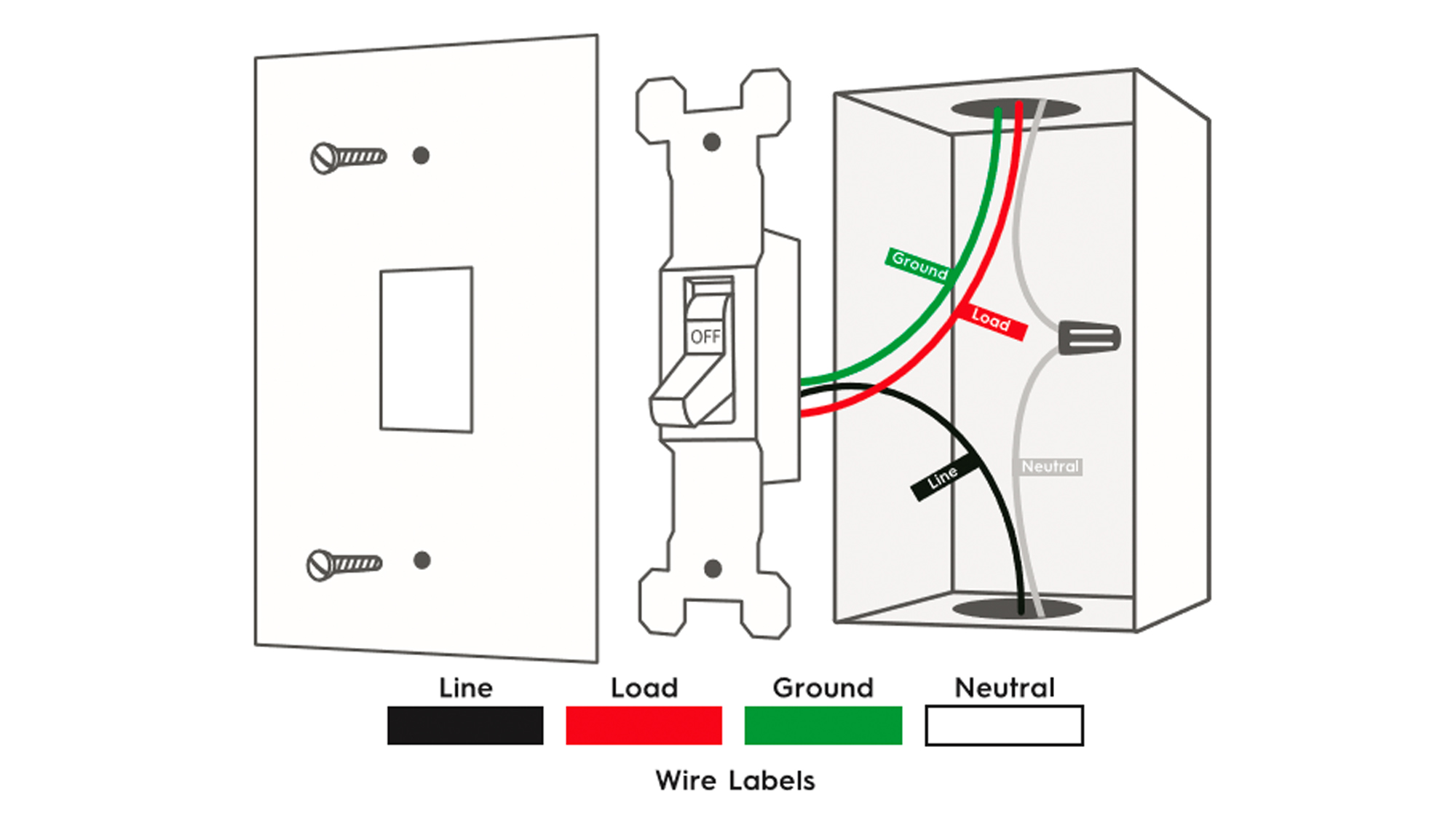DIY smart home: What’s a neutral wire and what to do if you don’t have one
Why you need to know about neutral wires before buying or installing a smart switch

This story is part of an ongoing DIY smart home series. Be sure to check out the latest installments to follow the renovation process from start to finish.
Disclaimer: Consult a licensed electrician for questions regarding to your home's circuitry, and be sure to refer to building codes before doing electrical work, which vary by location.
My spiral down the rabbit hole of rewiring my DIY smart home started with a seemingly simple question: “Does your house have a neutral wire?”
The folks from Brilliant Smart Home System wanted to know whether their aptly named smart control panel would work in my home. While I knew of electrical compatibility issues with older houses, I hadn’t considered whether mine had the proper wiring in place before ordering new smart switches.
In terms of a home’s power flow, the neutral wire provides a return path for currents essential to most modern U.S. electrical codes. Combined with a power source and ground wire, you have the makeup of a contemporary light switch, but earlier switches operate without the neutral. So when it comes to designing a smart home, a neutral wire can cause headaches if you don’t have one at your switch location. Or if you don’t know whether you have one, like me.
Most homes built after the 1980s have a neutral wire throughout the space, case closed. But my home was built right smack in the mid-1980s, meaning the wiring situation behind the walls could’ve gone either way — a quandary the Jetsons never suffered, I’m sure. So to answer Brilliant’s question and figure out if my decision to use smart switches instead of smart lights had backfired, we broke drywall.
We were met with a mess of wires I can only describe as a preschooler's art project. I was pretty sure the tangled yards of white wires meant we had a neutral wire running through our kitchen’s switches, but we still consulted an electrician to formulate a rewiring plan based on the devices we want in our soon-to-be 21st century smart home.

According to my Wiring 101 crash course — courtesy of a day spent shadowing said electrician — a lack of neutral wire in our switches wouldn’t have been the end of the world. But if you’re interested in any smart home devices that draw power directly from your electrical network (a.k.a not an outlet,) you’ll need to know if a) you have it and b) if the devices you want require it.
Sign up to get the BEST of Tom's Guide direct to your inbox.
Get instant access to breaking news, the hottest reviews, great deals and helpful tips.
Neutral wire: How to tell if you have it, what to do if you don’t
The easiest way to determine whether you have neutral wires in your switches is to know when your house was built, or the last time it underwent a major renovation. If that happened after 1990, it’s most likely you have neutral wires running throughout your home. If that happened before 1980, it’s most likely that you don’t have the neutral wiring necessary for smart switches.
Things get less certain if your home was built in the 1980s. Not just an era of questionable hairstyles and John Hughes movies, the 80s were a transitional period for electrical standards. A New York Times article from 1985 titled “Home Improvement” is very telling of the changes as they related to new building code norms.
To check if you have a neutral wire, you can pop open a switch box in your home, if you know how to do so safely (you can also have an electrician come do it). If you see a white wire coming out of the gang box, you likely have a neutral wire.

If your switch box doesn’t have a neutral wire, you have two options. First, you can have an electrician install one. Our electrician claimed it’s not difficult work, but they’ll need to get behind your walls. Since we opened ours up for the renovation, it wouldn’t have been an issue to run a neutral wire for the devices I wanted.
The non-demolition option is to use any of the best smart light bulbs or use smart switches that work without a neutral wire. A few years ago, there weren’t many companies addressing the wiring discrepancies of older homes. But now you can find a fair selection of models that let you smarten up your space sans-neutral wire.
Neutral wire smart switch vs. no neutral wire smart switch
Several of the best smart switches still need a neutral wire to complete a given circuit and stay powered 24/7. The Brilliant smart home controller, for example, demands constant power to fulfill its role as a wall-mounted display to manage your collection of connected devices. A neutral wire also provides individual dimming functionality for the controller’s switches.
In addition to their neutral wire-needing smart switches, some brands have tried to offer more inclusive options to older homes. Cync (formerly C by GE) developed a 3-wire switch last year that works without the neutral wire, making it a good choice for anyone looking to limit the necessary electrical work for raising their home’s IQ.
The Lutron Caseta Wireless In-Wall Dimmer is another switch option for homes built in the pre-neutral wire era. However, to use its voice control capabilities with Alexa or Google Assistant (here’s why I went Alexa over Google Assistant) you’ll need to set up a separate Lutron bridge connected to your router like you might for Philips Hue lights.
Before you buy any smart switches, be sure to read the fine print. If you’re taking the DIY route like I am, review the installation instructions that are available from the retailers or product site ahead of time. The Brilliant team did me a solid by double-checking my home’s compatibility, but consider this a lesson learned.
Enjoy solving these DIY smart home puzzles with me? Stay tuned for the next installment of this series. In the meantime, e-mail me at kate.kozuch@futurenet.com or leave a comment below with anything you’d like to see me cover, whether it’s a how-to or buying decision you’re struggling to make. Be sure to check out my guides to the best smart home devices (and best cheap smart home devices), too.
Kate Kozuch is the managing editor of social and video at Tom’s Guide. She writes about smartwatches, TVs, audio devices, and some cooking appliances, too. Kate appears on Fox News to talk tech trends and runs the Tom's Guide TikTok account, which you should be following if you don't already. When she’s not filming tech videos, you can find her taking up a new sport, mastering the NYT Crossword or channeling her inner celebrity chef.
-
DoItForMe.Solutions You'll need to check each switch location for a neutral wire. It is common even in homes with neutral wiring, that not all switch locations have a neutral wire.Reply
For maximum flexibility, especially if planning to add a lot of smart dimmers, you really should take a look at the Lutron RA2 Select product line. The new PRO+ dimmers work with or without a neutral wire, can drive all kinds of lighting loads including more specialized fixtures, and the selection of color schemes will please the most demanding spouse or Interior designer.
It's more expensive than Caseta, but uses the same app based software and integrations with HomeKit and other systems. It does "require" purchase through an electrician or dealer, but is widely sold bu electrical distributors or online sources to "anyone". -
4freedomssake Is it now a building code that all new homes and businesses have a neutral wire?Reply -
dleany Reply
Speaking as a former electrician who has worked on everything from homes, to large commercial projects, and even to a nuclear power plant, I can tell you that you do have a neutral wire. If you didn't have a neutral wire, nothing electrical in your home would work, because you would not have a complete circuit. The author does not appear to understand what is meant when manufactures say, "You need a neutral wire." What they mean is that you need a neutral wire IN THE BOX WHERE YOU ARE GOING TO INSTALL THE SMART SWITCH.4freedomssake said:Is it now a building code that all new homes and businesses have a neutral wire?
A switch only breaks the hot wire of a circuit, so it only requires two wires: the hot wire in, and the switch leg out. Because of the way most homes are wired, MOST, but not all, switch boxes will contain a neutral wire. To find out if the location where you want to install the switch has a neutral, you'll need to remove the existing switch from the box, (you will NOT need to break any drywall). In the U.S., the neutral wire is white, but many homes use non-metallic-sheathed wiring, (commonly called by the name brand, "Romex"), so just because a wire is white doesn't guarantee it's a neutral. You'll need to use a voltage tester, and know what you're doing, to be sure you have a neutral. The good news, as I mentioned before, is that most switch boxes will contain a neutral.
Good luck! -
craeg11 What dleany said.Reply
You should pull this article and re-write it. It's really poorly researched. You don't explain what a neutral actually is despite the title, why the code was changed to include a neutral in every switch box, no mention of local building codes and how that affects when it was required in your area, etc. I'm also an electrician and was mildly interested in an in depth discussion of the neutral wire and was sincerely disappointed about the article.
Plus the photo at the top is of an exposed outlet, not a switch. All outlets have a neutral wire, before and after the 80's, or they wouldn't work. Really lazy writing. -
TranceMist What a terrible article. It doesn’t even answer the basic question posed in the title “What is a neutral wire”, only how to figure out if you have one.Reply -
Gomesy02 I am a homeowner and a licensed & insured electrician. I firmly believe in DIY work in your home whenever & wherever possible within reason. However, electrical work is not one of those places for most people. If u need to ask the question “does my house have a neutral”, than u have no business near any of ur homes wiring. This shows u dont even have the most basic understanding of the fundamentals of how a simple circuit works, let alone ones as complex as the ones in ur home. U will most likely end up creating a dangerous situation for urself and for ur family. PLEASE do all the other DIYers who may be “guided” by this article a favor, and remove it until it is properly researched.Reply

